The 1926-S Peace Dollar value ranges from approximately $30 for well-worn coins to over $52,000 for top-grade examples. Circulated coins typically sell for $30-$65, while uncirculated specimens vary significantly: MS-63 to MS-64 grade coins fetch $250-$440, MS-65 around $949, MS-66 approximately $3,025, and MS-67 can reach $52,000. Made of 90% silver and minted in San Francisco, the coin’s value depends primarily on condition (grade), rarity in high grades, and market fluctuations influenced by silver prices and collector demand.
The 1926 Peace dollar represents a fascinating chapter in American coinage, with values spanning from modest silver melt prices to auction records exceeding $50,000. Whether you’ve inherited a worn specimen or discovered an uncirculated gem, understanding the nuances between Philadelphia, Denver, and San Francisco issues—along with their potential errors—can mean the difference between selling at silver spot or securing a collector’s premium that multiplies your coin’s worth several hundred times over.
Understanding the 1926 Peace Dollar Production Numbers
The 1926 Peace dollar was struck at three mints with dramatically different production volumes. The Philadelphia Mint (no mint mark) produced 1,939,000 pieces, making it the most common variant. Denver stamped out 2,348,700 coins bearing the “D” mint mark, while San Francisco contributed 6,980,000 pieces marked with an “S”—the highest mintage of the three facilities that year.
These production figures tell only part of the story. Survival rates paint a different picture, particularly for high-grade specimens. The 1926-S, despite its higher mintage, proves exceptionally difficult to locate in pristine mint state condition. Most coins entered immediate circulation, where the rigors of commerce quickly degraded their surfaces. The Philadelphia issue, while scarcer in total numbers, occasionally surfaces in superior grades because some quantities remained in bank vaults before later release.
Understanding these dynamics helps explain why a common-date Peace dollar can command premium prices based solely on preservation quality rather than absolute rarity.
1926 Peace Dollar Value by Mint Mark and Grade
Philadelphia Issue (No Mint Mark)
The Philadelphia-struck 1926 Peace dollar carries no mint mark, with authentication requiring examination of the reverse below the eagle’s tail feathers where mint marks would appear on D or S specimens.
| Grade | Value Range |
|---|---|
| Good-4 to Very Good-8 | $28-$32 |
| Fine-12 to Very Fine-20 | $32-$38 |
| Extremely Fine-40 to About Uncirculated-55 | $40-$58 |
| MS-60 to MS-62 | $65-$110 |
| MS-63 | $145-$185 |
| MS-64 | $280-$380 |
| MS-65 | $650-$950 |
| MS-66 | $2,200-$4,500 |
| MS-67 | $18,000-$35,000 |
Heritage Auctions sold an MS-67 Philadelphia example for $33,600 in January 2023, demonstrating the dramatic premium attached to exceptional preservation. Specimens grading MS-65 typically exhibit strong luster with only minor contact marks hidden in less visible areas like Liberty’s hair or the eagle’s breast feathers.
Denver Mint Issue (D Mint Mark)
Denver’s 1926-D Peace dollars display the “D” mint mark on the reverse, positioned directly below the eagle’s tail feathers and above the word “ONE.” This variety generally trades at slight premiums over Philadelphia issues in comparable grades.
| Grade | Value Range |
|---|---|
| Good-4 to Very Good-8 | $30-$35 |
| Fine-12 to Very Fine-20 | $35-$42 |
| Extremely Fine-40 to About Uncirculated-55 | $45-$65 |
| MS-60 to MS-62 | $75-$125 |
| MS-63 | $165-$225 |
| MS-64 | $320-$450 |
| MS-65 | $850-$1,300 |
| MS-66 | $3,500-$6,200 |
| MS-67 | $28,000-$45,000 |
A PCGS MS-66+ specimen realized $5,760 at Stack’s Bowers in August 2023. The Denver issue typically exhibits slightly weaker strikes than Philadelphia coins, particularly on Liberty’s hair above the ear and the eagle’s wing feathers. Collectors should examine these diagnostic areas when evaluating potential purchases.
San Francisco Issue (S Mint Mark)
The 1926-S carries the highest mintage but paradoxically proves most challenging in gem condition. The “S” mint mark appears in the same location as Denver’s mark, requiring careful examination to distinguish between the two facilities’ output.
| Grade | Value Range |
|---|---|
| Good-4 to Very Good-8 | $30-$36 |
| Fine-12 to Very Fine-20 | $36-$44 |
| Extremely Fine-40 to About Uncirculated-55 | $48-$68 |
| MS-60 to MS-62 | $85-$145 |
| MS-63 | $220-$295 |
| MS-64 | $380-$540 |
| MS-65 | $900-$1,400 |
| MS-66 | $2,800-$4,500 |
| MS-67 | $45,000-$65,000 |
Legend Rare Coin Auctions achieved $52,875 for an MS-67 example in March 2023, establishing this grade’s market ceiling. The San Francisco Mint struggled with die quality in 1926, resulting in many weakly struck coins even among uncirculated survivors. Premium examples display full feather details on the eagle’s wings and complete hair definition on Liberty’s portrait.
Valuable Errors and Varieties Worth Discovering
Doubled Die Obverse Varieties
Several 1926 Peace dollars exhibit doubling on the obverse, most notably on the word “LIBERTY” and the date digits. The most valuable variety shows pronounced doubling on “LIBERTY” visible to the naked eye, with an MS-64 specimen selling for $1,850 at GreatCollections in November 2022—more than four times the value of a normal strike in the same grade.
Authentication requires careful examination under 5x magnification. Look for a distinct secondary outline on letters, particularly the “L” and “I” in “LIBERTY.” The date digits, especially the “1” and “9,” may also display splitting or separation suggesting two distinct impressions from the die.
Die Cracks and Cuds
Die deterioration creates raised lines on finished coins corresponding to cracks in the striking die. Advanced die breaks, called cuds, appear as raised lumps where pieces of the die have broken away entirely. A 1926-S Peace dollar with a significant die cud affecting the reverse eagle’s wing sold for $385 in AU-55 condition at Heritage in July 2023—approximately 5.5 times the standard value for that grade.
Collectors particularly prize cuds that affect major design elements. A 1926 Philadelphia issue with a cud obliterating portions of the motto “IN GOD WE TRUST” commanded $620 in MS-62 condition, nearly six times the typical price point for that grade and mint mark combination.
Lamination Errors
Manufacturing defects in the planchet preparation process occasionally created lamination flaws where the metal’s surface peels away in thin layers. These errors range from minor flaking to dramatic separations covering substantial portions of the coin’s surface.
A 1926-D Peace dollar with a prominent lamination error across Liberty’s face and extending into the field graded Extremely Fine-45 and realized $445 at Stack’s Bowers in May 2023. The error’s dramatic visual impact and clear visibility drove the price to nearly seven times the standard XF-45 value for this issue.
Off-Center Strikes
Off-center errors occur when the planchet fails to align properly between the dies during striking. The degree of displacement determines value, with 10-15% off-center specimens trading at modest premiums while dramatic 40-50% misalignments command substantial collector interest.
A 1926-S Peace dollar struck approximately 35% off-center with a full date visible sold for $1,950 in 2023 despite technical grade limitations from the error. The combination of clear date visibility and dramatic misalignment created strong collector demand. Specimens missing the date due to off-center striking typically bring only modest premiums, as authentication becomes problematic without this critical identifying feature.
Authentication and Grading Considerations
Professional grading through PCGS or NGC provides authentication and assigns a numerical grade on the Sheldon Scale from 1 to 70. For 1926 Peace dollars, the cost of professional grading makes economic sense for specimens potentially grading MS-63 or higher, where price differences between grade levels justify the $35-$45 submission fee.
Counterfeit Peace dollars exist, particularly for higher-grade specimens. Authentic 1926 coins weigh 26.73 grams with a diameter of 38.1 millimeters and contain 90% silver and 10% copper. A simple magnet test eliminates many counterfeits, as silver exhibits no magnetic attraction. More sophisticated fakes require professional authentication examining die characteristics, edge reeding patterns, and metal composition through specific gravity testing.
Strike quality varies significantly among 1926 Peace dollars, affecting grade assignments and market desirability. Full head detail on Liberty and complete feather definition on the eagle’s wings characterize superior strikes. Weak areas typically include Liberty’s hair above the ear, the eagle’s breast feathers, and the rays emanating from the word “PEACE” on the reverse.
Market Trends and Investment Potential
Silver content provides a price floor for 1926 Peace dollars. At current silver prices near $24 per troy ounce, each coin contains approximately $17-$18 in melt value. This intrinsic value cushions downside risk for circulated specimens trading near silver content levels.
The premium market for gem-quality specimens operates independently from silver prices, driven by collector demand and population scarcity. PCGS population reports show only 127 1926-S Peace dollars grading MS-66 or higher, creating competitive bidding when premium examples reach auction. This scarcity supports strong prices despite the issue’s high original mintage.
Market analysis from 2018-2023 shows MS-65 specimens appreciating 45-60% across all three mint marks, outpacing inflation and precious metals gains during this period. MS-66 examples demonstrated even stronger performance with 70-85% appreciation, reflecting increasing competition among registry set collectors pursuing condition census specimens.
Maximizing Value When Buying or Selling
Purchasing 1926 Peace dollars requires balancing grade, eye appeal, and price. A coin graded MS-64 with exceptional luster and minimal distracting marks often provides better long-term satisfaction than a marginal MS-65 with subpar surfaces despite the technical grade difference. Examine multiple examples within your target grade range before committing to significant purchases.
Timing sales around major auctions maximizes exposure to serious collectors willing to pay premium prices for exceptional specimens. Heritage, Stack’s Bowers, and Legend Rare Coin Auctions conduct regular sessions featuring Peace dollars, with their extensive marketing reaching thousands of potential buyers. Consignment deadlines typically fall 6-8 weeks before auction dates, requiring advance planning for optimal results.
Raw coins—those not professionally graded—require careful evaluation of both authenticity and accurate grade assessment. Purchasing raw 1926 Peace dollars makes sense only when buying at significant discounts to graded equivalents or when personal expertise allows confident authentication and grading. The risk of cleaning, counterfeits, or overgraded coins justifies caution when dealing with raw specimens marketed as uncirculated or near-uncirculated quality.
Building Your 1926 Peace Dollar Collection Strategy
Starting a focused collection of 1926 Peace dollars offers multiple approaches depending on budget and objectives. A basic three-coin set representing each mint facility in circulated condition requires $90-$110, providing tangible examples of all production varieties. This foundation allows hands-on comparison of mint mark placement, strike characteristics, and surface qualities across the three issues.
Advanced collectors pursue registry sets through PCGS or NGC, competing for highest total grade points across all three mint marks. This approach demands patience and substantial capital, as assembling three coins grading MS-66 or better requires $8,500-$15,000 plus ongoing upgrades as superior specimens emerge. Registry competition has driven significant price appreciation for condition census coins over the past decade.
Error collectors might focus exclusively on 1926 varieties, assembling examples of doubled dies, die cracks, laminations, and off-center strikes across multiple mint marks. This specialized approach creates unique collections showcasing minting anomalies while often requiring lower total investment than gem-quality normal strikes. A comprehensive error collection spanning 8-12 different varieties typically costs $2,500-$5,000 when emphasizing mid-grade examples rather than premium specimens.
You may be interested:
- 1859 Indian Head Penny Coin Value Complete Errors List And No Mint Mark Worth Guide For Collectors
- 1911 V Nickel Coin Value Guide Complete Errors List And No Mint Mark Worth Today
- 1902 Dime Coin Value Complete Errors List With O S And No Mint Mark Worth Guide
- 1788 Quarter Coin Value Complete Guide Errors List And D S P Mint Mark Worth Revealed
- 1776 To 1976 Bicentennial Half Dollar Coin Value Complete Errors List And What Your D S And No Mint Mark Coins Are Actually Worth
- 1990 Penny Coin Value Errors List How D S And No Mint Mark Pennies Are Worth Thousands Of Dollars

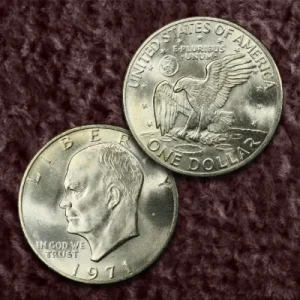
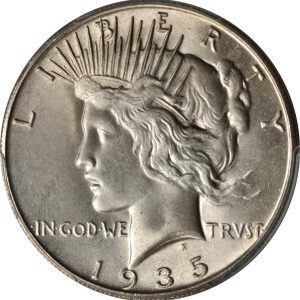
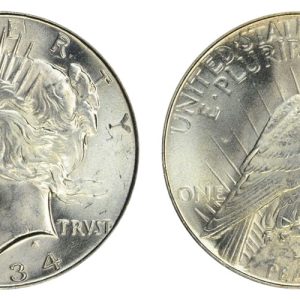
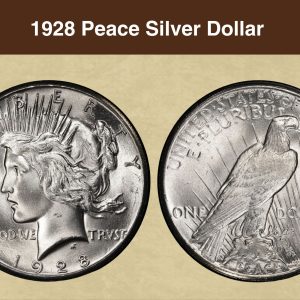
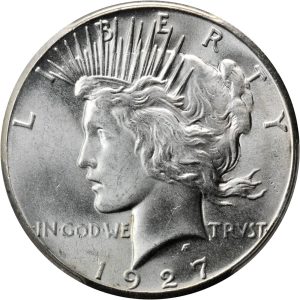
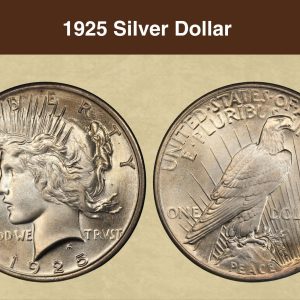
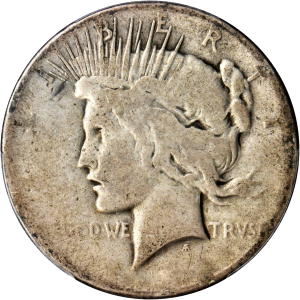
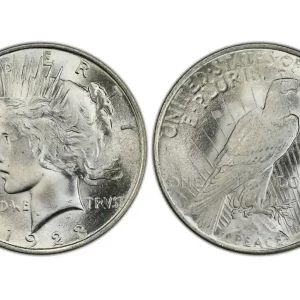
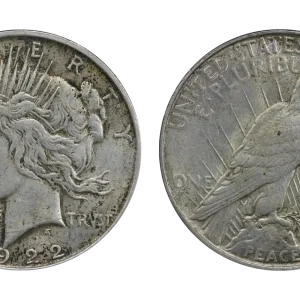
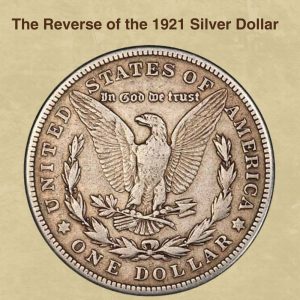
How much is a 1926 S Peace Dollar worth?
A 1926-S Peace dollar’s value ranges from approximately $30 for a well-worn coin to over $50,000 for a top-grade example. Prices vary significantly depending on the coin’s condition (grade), with circulated coins starting around $30-$60, while uncirculated coins in excellent condition can be worth several thousand dollars. The coin is made of 90% silver and was minted in San Francisco.
What makes a 1926 Peace Dollar rare?
A 1926 silver dollar isn’t inherently rare; its value and “rarity” primarily depend on its mint mark, condition (grade), and strike quality. Coins from the Denver (1926-D) and San Francisco (1926-S) mints were produced in significant quantities and are common in lower grades, but the 1926-D can be scarce in uncirculated condition, and high-grade (MS-66 and above) regular strike coins from Philadelphia are significantly harder to find.
What does the D mean on a silver dollar value?
Denver Mint (“D” mint mark) As such, 1922 D silver dollar value is typically higher than the more common Philadelphia examples. Denver coins often exhibit weaker strikes due to die spacing issues, making well-struck examples particularly valuable.
What is the rarest peace silver dollar?
The 1928 Peace dollar, with a mintage of just 360,649, is the rarest business strike of the series. While the 1928-P is the lowest mintage coin, some specialized and proof versions, such as the 1921 High Relief or 1922 High Relief Matte Proof, are significantly rarer and more valuable due to their extremely limited production.